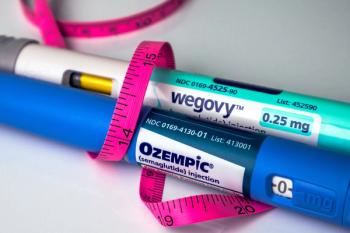
What Will COVID-19 Transmission Look Like Post Pandemic?
Investigators used simulation models to project the transmission dynamics of COVID-19.
Whether resurgence of severe acute respiratory syndrome coronavirus 2 (SARS-CoV-2) occurs post pandemic may depend on its duration of immunity, according to a new study published in Science.
The study findings suggested that recurrent wintertime outbreaks of the infection could be possible if the virus enters into regular circulation.
Despite current social distancing, resurgences of the virus are possible after the initial pandemic wave, which could prompt prolonged or intermittent periods of social distancing in the future, the study’s investigators indicated. Experts postulate a couple of scenarios for how the pandemic could play out. Two of these scenarios suggest that either SARS-CoV-2 may follow its closest genetic relative, SARS CoV-1, and be eradicated after a brief, but intense epidemic, or resemble a pandemic influenza by circulating seasonally after the initial global wave of infection.
For the study, the investigators examined a range of likely transmission scenarios through 2025 and assessed non-pharmaceutical interventions that could reduce the intensity of the outbreak.
In all modeled scenarios, the research showed that SARS-CoV-2 was capable of producing a substantial outbreak regardless of the time of year. According to the data, winter/spring favored outbreaks with lower peaks, whereas autumn/winter led to more acute outbreaks. Annual SARS-CoV-2 outbreaks are more likely in the event of short-term immunity, whereas longer-term immunity may favor biennial outbreaks.
“Much like pandemic influenza, many scenarios lead to SARS-CoV-2 entering into long-term circulation alongside the other human betacoronaviruses, possibly in annual, biennial, or sporadic patterns over the next 5 years,” the investigators wrote.
The investigators also noted that the amount of seasonal variation in transmission could differ between geographic locations, the same as with influenza. However, the models showed that stronger seasonal forcing led to a great accumulation of susceptible individuals during periods of low transmission in the summer, leading to recurrent outbreaks with higher peaks post pandemic.
Importantly, if immunity to SARS-CoV-2 turns out to be permanent, the virus could disappear for 5 or more years after causing a major outbreak, the investigators found. However, low levels of cross immunity from the other betacoronaviruses against SARS-CoV-2 could make the virus appear to die out, only to come back again after a few years.
The investigators urged that, “regardless of the post-pandemic transmission dynamics of SARS-CoV-2, urgent measures are required to address the ongoing epidemic.” Because pharmaceutical treatments and vaccines may require months to years to become available, other interventions are necessary to curb transmission.
To capture the necessary duration and intensity of measures such as social distancing, the investigators adapted their transmission model to reflect moderate/mild/asymptomatic infections, infections that lead to hospitalization but not critical care, and infections that require critical care. They simulated epidemic trajectories and social distancing to identify the effects of social distancing scenarios on transmission resurgence.
When transmission did not undergo seasonal forcing, 1-time social distancing measures reduced the epidemic peak size. However, under all scenarios, there was a resurgence of infection once the simulated social distancing measures were lifted, according to the investigators.
“For simulations with seasonal forcing, the post-intervention resurgent peak could exceed the size of the unconstrained epidemic, both in terms of peak prevalence and in terms of total number infected,” they wrote. Even with strong social distancing, there was a high proportion of susceptible individuals in the population, leading to an intense epidemic with seasonal resurgence. Furthermore, none of the 1-time interventions were effective in maintaining the prevalence of critical cases below the critical care capacity, according to the findings. As such, intermittent social distancing may be necessary to help prevent critical care capacity from being exceeded.
"We do not take a position on the advisability of these scenarios given the economic burden that sustained distancing may impose, but we note the potentially catastrophic burden on the health care system that is predicted if distancing is poorly effect and/or not sustained for long enough," the investigators wrote.
Without therapeutic interventions or vaccines, surveillance and intermittent social distancing may need to be maintained into 2022, according to the analysis.
“The total incidence of COVID-19 illness over the next 5 years will depend critically upon whether or not it enters into regular circulation after the initial pandemic wave, which in turn depends primarily upon the duration of immunity that SARS-CoV-2 infection imparts,” the investigators concluded.
References:
1. Kissler SM, Tedijanto C, Goldstein E, et al. Projecting the transmission dynamics of SARS-CoV-2 through the postpandemic period. Science. Published April 20, 2020. Doi: 10.1126/science.abb5793
Newsletter
Pharmacy practice is always changing. Stay ahead of the curve with the Drug Topics newsletter and get the latest drug information, industry trends, and patient care tips.




